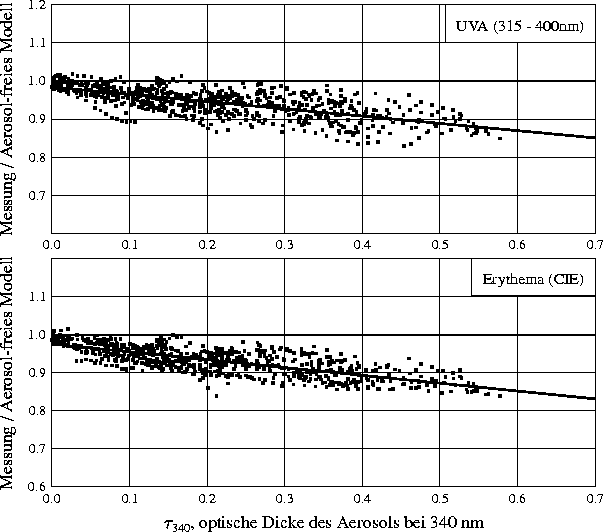Attenuation by aerosols

To investigate the attenuation of spectral global irradiance
by aerosols, cloudless sky spectra were normalized to
model calculations for an aerosol-free atmosphere. The figure
shows the calculated reduction of
erythemal and UVA irradiances as a function of the optical depth
at 340 nm. The slope of the linear regression is about -10%
per optical depth of 0.5. A small increase of the
slope towards lower wavelengths and larger solar zenith angles
was found from the data. At polluted sites with more absorbing
aerosols (lower single-scattering albedo) the slope of the
decrease is expected to be larger.

In consequence, a description of the aerosol is required to model
spectral irradiance with high accuracy. The figure shows the ratio of
measured and calculated erythemal irradiance, for three
degrees of aerosol parameterization: (top) no aerosol in the model;
(middle) visibility at 550 nm, used to estimate the optical depth in
the UV; (bottom) measured spectral UV aerosol optical depth.
Knowledge of the spectral optical depth improves the
agreement considerably. At polluted sites with more absorbing
aerosols, some information about the absorbing properties
of the aerosol (single-scattering albedo) would be required
additionally. Here, a clean-continental aerosol with a
high single-scattering albedo of about 0.95 was assumed.


